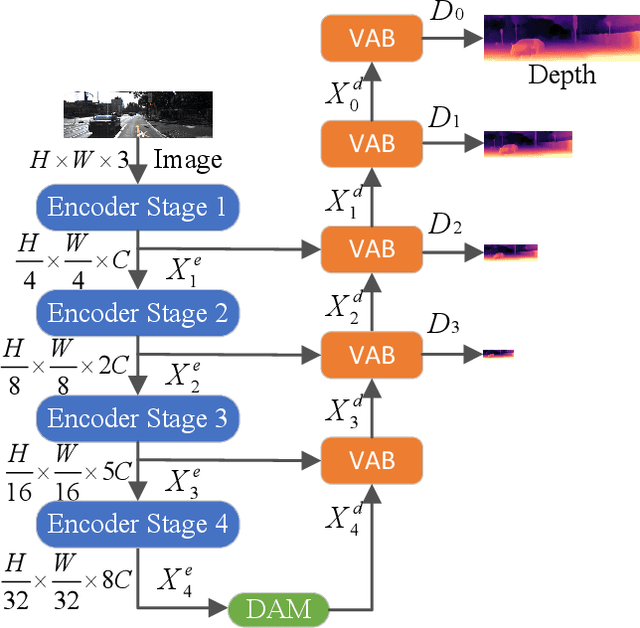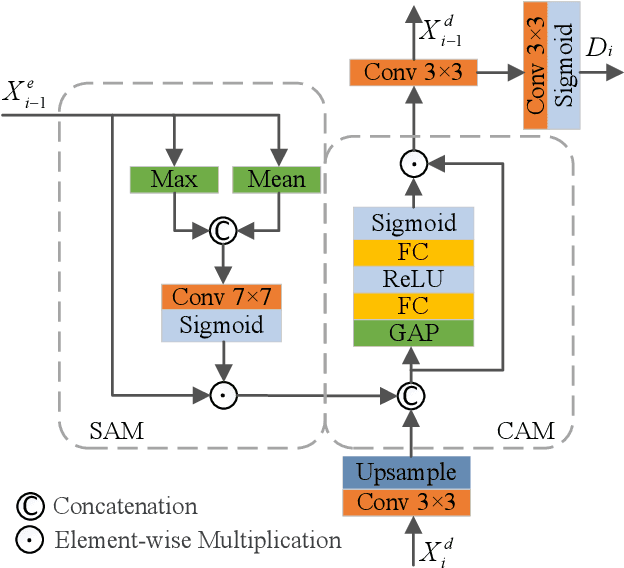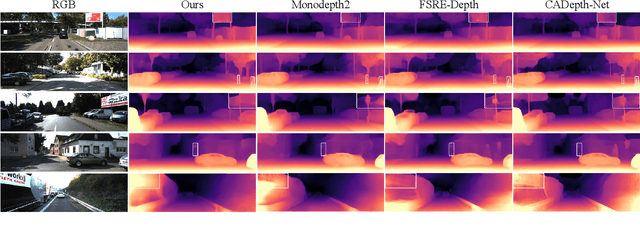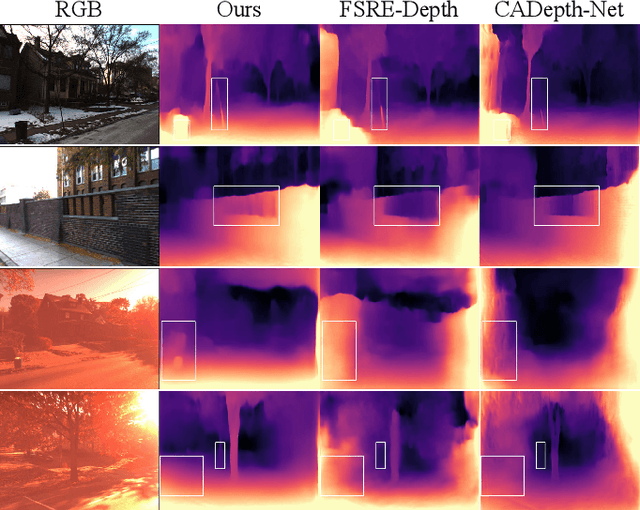Zijun Wang
STAR-1: Safer Alignment of Reasoning LLMs with 1K Data
Apr 02, 2025Abstract:This paper introduces STAR-1, a high-quality, just-1k-scale safety dataset specifically designed for large reasoning models (LRMs) like DeepSeek-R1. Built on three core principles -- diversity, deliberative reasoning, and rigorous filtering -- STAR-1 aims to address the critical needs for safety alignment in LRMs. Specifically, we begin by integrating existing open-source safety datasets from diverse sources. Then, we curate safety policies to generate policy-grounded deliberative reasoning samples. Lastly, we apply a GPT-4o-based safety scoring system to select training examples aligned with best practices. Experimental results show that fine-tuning LRMs with STAR-1 leads to an average 40% improvement in safety performance across four benchmarks, while only incurring a marginal decrease (e.g., an average of 1.1%) in reasoning ability measured across five reasoning tasks. Extensive ablation studies further validate the importance of our design principles in constructing STAR-1 and analyze its efficacy across both LRMs and traditional LLMs. Our project page is https://ucsc-vlaa.github.io/STAR-1.
Low-Complexity Near-Field Beam Training with DFT Codebook based on Beam Pattern Analysis
Mar 27, 2025Abstract:Extremely large antenna arrays (ELAAs) operating in high-frequency bands have spurred the development of near-field communication, driving advancements in beam training and signal processing design. This paper proposed an efficient near-field beam training method using the discrete Fourier transform (DFT) codebook that is conventionally used for far-field users (FUs). We begin by analyzing the received beam pattern and deriving a closed-form expression for its width and central beam gain, which are validated through simulations. Using these derivations, we define a modified Rayleigh distance to distinguish between near-field and far-field users. Building on this, we propose a beam training method capable of simultaneously estimating user angle and distance with a complexity of O(1). Simulation results confirm the effectiveness of our proposed approach, demonstrating its capability for low-complexity near-field beam training while achieving high estimation accuracy.
CoLMDriver: LLM-based Negotiation Benefits Cooperative Autonomous Driving
Mar 11, 2025Abstract:Vehicle-to-vehicle (V2V) cooperative autonomous driving holds great promise for improving safety by addressing the perception and prediction uncertainties inherent in single-agent systems. However, traditional cooperative methods are constrained by rigid collaboration protocols and limited generalization to unseen interactive scenarios. While LLM-based approaches offer generalized reasoning capabilities, their challenges in spatial planning and unstable inference latency hinder their direct application in cooperative driving. To address these limitations, we propose CoLMDriver, the first full-pipeline LLM-based cooperative driving system, enabling effective language-based negotiation and real-time driving control. CoLMDriver features a parallel driving pipeline with two key components: (i) an LLM-based negotiation module under an actor-critic paradigm, which continuously refines cooperation policies through feedback from previous decisions of all vehicles; and (ii) an intention-guided waypoint generator, which translates negotiation outcomes into executable waypoints. Additionally, we introduce InterDrive, a CARLA-based simulation benchmark comprising 10 challenging interactive driving scenarios for evaluating V2V cooperation. Experimental results demonstrate that CoLMDriver significantly outperforms existing approaches, achieving an 11% higher success rate across diverse highly interactive V2V driving scenarios. Code will be released on https://github.com/cxliu0314/CoLMDriver.
SoK: Knowledge is All You Need: Last Mile Delivery for Automated Provenance-based Intrusion Detection with LLMs
Mar 05, 2025Abstract:Recently, provenance-based intrusion detection systems (PIDSes) have been widely proposed for endpoint threat analysis. However, due to the lack of systematic integration and utilization of knowledge, existing PIDSes still require significant manual intervention for practical deployment, making full automation challenging. This paper presents a disruptive innovation by categorizing PIDSes according to the types of knowledge they utilize. In response to the prevalent issue of ``knowledge silos problem'' in existing research, we introduce a novel knowledge-driven provenance-based intrusion detection framework, powered by large language models (LLMs). We also present OmniSec, a best practice system built upon this framework. By integrating attack representation knowledge, threat intelligence knowledge, and benign behavior knowledge, OmniSec outperforms the state-of-the-art approaches on public benchmark datasets. OmniSec is available online at https://anonymous.4open.science/r/PIDS-with-LLM-613B.
DEAL: Data-Efficient Adversarial Learning for High-Quality Infrared Imaging
Mar 02, 2025Abstract:Thermal imaging is often compromised by dynamic, complex degradations caused by hardware limitations and unpredictable environmental factors. The scarcity of high-quality infrared data, coupled with the challenges of dynamic, intricate degradations, makes it difficult to recover details using existing methods. In this paper, we introduce thermal degradation simulation integrated into the training process via a mini-max optimization, by modeling these degraded factors as adversarial attacks on thermal images. The simulation is dynamic to maximize objective functions, thus capturing a broad spectrum of degraded data distributions. This approach enables training with limited data, thereby improving model performance.Additionally, we introduce a dual-interaction network that combines the benefits of spiking neural networks with scale transformation to capture degraded features with sharp spike signal intensities. This architecture ensures compact model parameters while preserving efficient feature representation. Extensive experiments demonstrate that our method not only achieves superior visual quality under diverse single and composited degradation, but also delivers a significant reduction in processing when trained on only fifty clear images, outperforming existing techniques in efficiency and accuracy. The source code will be available at https://github.com/LiuZhu-CV/DEAL.
AttnGCG: Enhancing Jailbreaking Attacks on LLMs with Attention Manipulation
Oct 11, 2024



Abstract:This paper studies the vulnerabilities of transformer-based Large Language Models (LLMs) to jailbreaking attacks, focusing specifically on the optimization-based Greedy Coordinate Gradient (GCG) strategy. We first observe a positive correlation between the effectiveness of attacks and the internal behaviors of the models. For instance, attacks tend to be less effective when models pay more attention to system prompts designed to ensure LLM safety alignment. Building on this discovery, we introduce an enhanced method that manipulates models' attention scores to facilitate LLM jailbreaking, which we term AttnGCG. Empirically, AttnGCG shows consistent improvements in attack efficacy across diverse LLMs, achieving an average increase of ~7% in the Llama-2 series and ~10% in the Gemma series. Our strategy also demonstrates robust attack transferability against both unseen harmful goals and black-box LLMs like GPT-3.5 and GPT-4. Moreover, we note our attention-score visualization is more interpretable, allowing us to gain better insights into how our targeted attention manipulation facilitates more effective jailbreaking. We release the code at https://github.com/UCSC-VLAA/AttnGCG-attack.
How Many Unicorns Are in This Image? A Safety Evaluation Benchmark for Vision LLMs
Nov 27, 2023Abstract:This work focuses on the potential of Vision LLMs (VLLMs) in visual reasoning. Different from prior studies, we shift our focus from evaluating standard performance to introducing a comprehensive safety evaluation suite, covering both out-of-distribution (OOD) generalization and adversarial robustness. For the OOD evaluation, we present two novel VQA datasets, each with one variant, designed to test model performance under challenging conditions. In exploring adversarial robustness, we propose a straightforward attack strategy for misleading VLLMs to produce visual-unrelated responses. Moreover, we assess the efficacy of two jailbreaking strategies, targeting either the vision or language component of VLLMs. Our evaluation of 21 diverse models, ranging from open-source VLLMs to GPT-4V, yields interesting observations: 1) Current VLLMs struggle with OOD texts but not images, unless the visual information is limited; and 2) These VLLMs can be easily misled by deceiving vision encoders only, and their vision-language training often compromise safety protocols. We release this safety evaluation suite at https://github.com/UCSC-VLAA/vllm-safety-benchmark.
SSCBench: A Large-Scale 3D Semantic Scene Completion Benchmark for Autonomous Driving
Jun 15, 2023Abstract:Semantic scene completion (SSC) is crucial for holistic 3D scene understanding by jointly estimating semantics and geometry from sparse observations. However, progress in SSC, particularly in autonomous driving scenarios, is hindered by the scarcity of high-quality datasets. To overcome this challenge, we introduce SSCBench, a comprehensive benchmark that integrates scenes from widely-used automotive datasets (e.g., KITTI-360, nuScenes, and Waymo). SSCBench follows an established setup and format in the community, facilitating the easy exploration of the camera- and LiDAR-based SSC across various real-world scenarios. We present quantitative and qualitative evaluations of state-of-the-art algorithms on SSCBench and commit to continuously incorporating novel automotive datasets and SSC algorithms to drive further advancements in this field. Our resources are released on https://github.com/ai4ce/SSCBench.
A Competitive Method for Dog Nose-print Re-identification
Jun 01, 2022



Abstract:Vision-based pattern identification (such as face, fingerprint, iris etc.) has been successfully applied in human biometrics for a long history. However, dog nose-print authentication is a challenging problem since the lack of a large amount of labeled data. For that, this paper presents our proposed methods for dog nose-print authentication (Re-ID) task in CVPR 2022 pet biometric challenge. First, considering the problem that each class only with few samples in the training set, we propose an automatic offline data augmentation strategy. Then, for the difference in sample styles between the training and test datasets, we employ joint cross-entropy, triplet and pair-wise circle losses function for network optimization. Finally, with multiple models ensembled adopted, our methods achieve 86.67\% AUC on the test set. Codes are available at https://github.com/muzishen/Pet-ReID-IMAG.
Visual Attention-based Self-supervised Absolute Depth Estimation using Geometric Priors in Autonomous Driving
May 18, 2022



Abstract:Although existing monocular depth estimation methods have made great progress, predicting an accurate absolute depth map from a single image is still challenging due to the limited modeling capacity of networks and the scale ambiguity issue. In this paper, we introduce a fully Visual Attention-based Depth (VADepth) network, where spatial attention and channel attention are applied to all stages. By continuously extracting the dependencies of features along the spatial and channel dimensions over a long distance, VADepth network can effectively preserve important details and suppress interfering features to better perceive the scene structure for more accurate depth estimates. In addition, we utilize geometric priors to form scale constraints for scale-aware model training. Specifically, we construct a novel scale-aware loss using the distance between the camera and a plane fitted by the ground points corresponding to the pixels of the rectangular area in the bottom middle of the image. Experimental results on the KITTI dataset show that this architecture achieves the state-of-the-art performance and our method can directly output absolute depth without post-processing. Moreover, our experiments on the SeasonDepth dataset also demonstrate the robustness of our model to multiple unseen environments.
 Add to Chrome
Add to Chrome Add to Firefox
Add to Firefox Add to Edge
Add to Edge